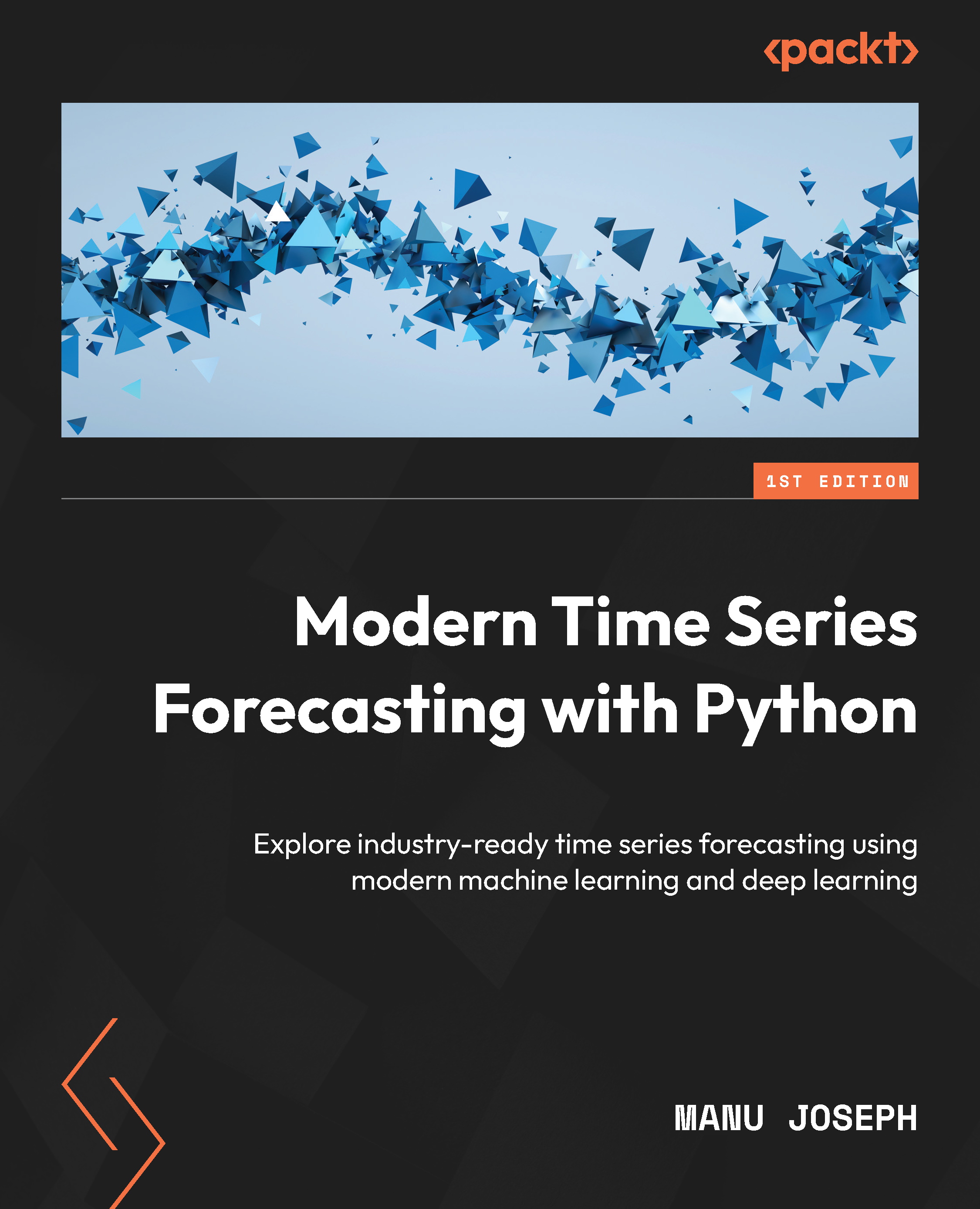-
Book Overview & Buying

-
Table Of Contents

Modern Time Series Forecasting with Python
By :

Modern Time Series Forecasting with Python
By:
Overview of this book
We live in a serendipitous era where the explosion in the quantum of data collected and a renewed interest in data-driven techniques such as machine learning (ML), has changed the landscape of analytics, and with it, time series forecasting. This book, filled with industry-tested tips and tricks, takes you beyond commonly used classical statistical methods such as ARIMA and introduces to you the latest techniques from the world of ML.
This is a comprehensive guide to analyzing, visualizing, and creating state-of-the-art forecasting systems, complete with common topics such as ML and deep learning (DL) as well as rarely touched-upon topics such as global forecasting models, cross-validation strategies, and forecast metrics. You’ll begin by exploring the basics of data handling, data visualization, and classical statistical methods before moving on to ML and DL models for time series forecasting. This book takes you on a hands-on journey in which you’ll develop state-of-the-art ML (linear regression to gradient-boosted trees) and DL (feed-forward neural networks, LSTMs, and transformers) models on a real-world dataset along with exploring practical topics such as interpretability.
By the end of this book, you’ll be able to build world-class time series forecasting systems and tackle problems in the real world.
Table of Contents (26 chapters)
Preface
Part 1 – Getting Familiar with Time Series
 Free Chapter
Free Chapter
Chapter 1: Introducing Time Series
Chapter 2: Acquiring and Processing Time Series Data
Chapter 3: Analyzing and Visualizing Time Series Data
Chapter 4: Setting a Strong Baseline Forecast
Part 2 – Machine Learning for Time Series
Chapter 5: Time Series Forecasting as Regression
Chapter 6: Feature Engineering for Time Series Forecasting
Chapter 7: Target Transformations for Time Series Forecasting
Chapter 8: Forecasting Time Series with Machine Learning Models
Chapter 9: Ensembling and Stacking
Chapter 10: Global Forecasting Models
Part 3 – Deep Learning for Time Series
Chapter 11: Introduction to Deep Learning
Chapter 12: Building Blocks of Deep Learning for Time Series
Chapter 13: Common Modeling Patterns for Time Series
Chapter 14: Attention and Transformers for Time Series
Chapter 15: Strategies for Global Deep Learning Forecasting Models
Chapter 16: Specialized Deep Learning Architectures for Forecasting
Part 4 – Mechanics of Forecasting
Chapter 17: Multi-Step Forecasting
Chapter 18: Evaluating Forecasts – Forecast Metrics
Chapter 19: Evaluating Forecasts – Validation Strategies
Index
